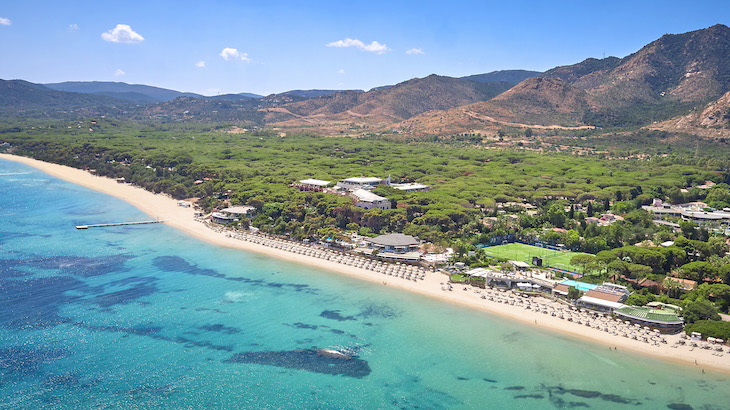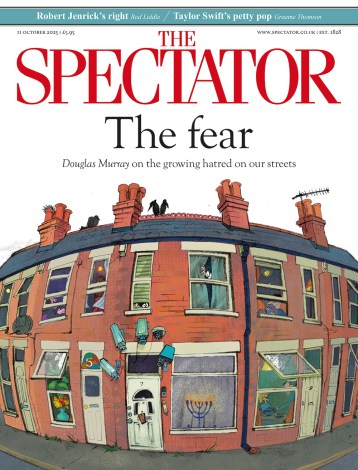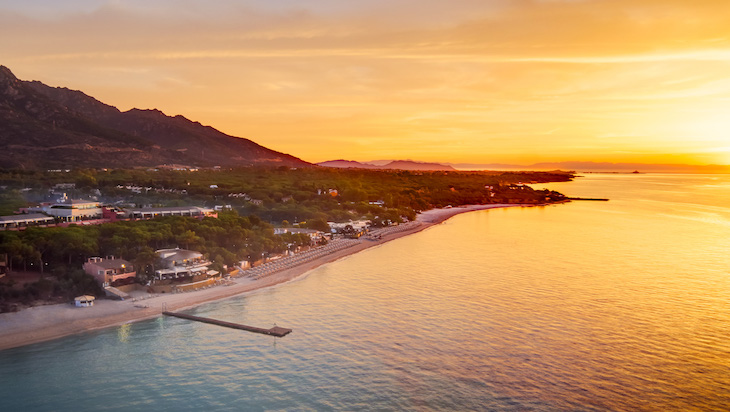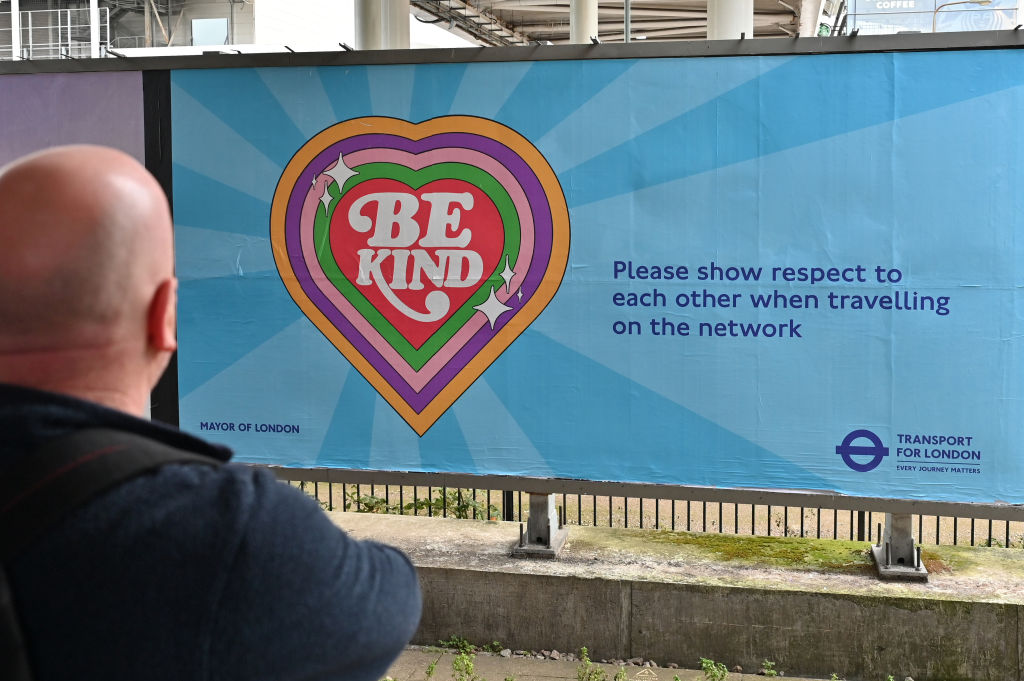Sardinia hasn’t always been the tranquil, picture-perfect paradise of today. The island was once ruled by bandits; its rugged landscape the perfect place for criminals to hide. Things weren’t much better on the coastline: slap bang in the middle of the Mediterranean, the island was an easy target for pirates and was vulnerable to plague. Life in Sardinia was once truly miserable.
Head west from Cagliari and it isn’t long before you’re in a Sardinia that many visitors don’t get to see
Thankfully, the pirates and plague are no longer a problem in this part of the world. But there is another ‘p’ you might have to watch out for in Sardinia: the politician. In the run-up to the doomed general election in July, Boris Johnson opted to sunbathe in Sardinia rather than canvass in Crawley. It’s hard to blame him.
Boris isn’t the only politician to fall for Sardinia’s charms. So enamoured were the Blairs by their trip to Sardinia in 2004 that Cherie said: ‘I have never had an evening like the one I had in Sardinia’. George W. Bush also visited while he was president.
The late, great Silvio Berlusconi loved the island and entertained guests at his Villa Certosa. Vladimir Putin was one of those who took a trip to see him there. Berlusconi’s somewhat tacky but opulent half-a-billion euro des res – located on the island’s Costa Smeralda – is now on the market.
While this northern part of Sardinia is beautiful, in summer the Costa Smeralda turns into a parking grid for super yachts. Private jets and helicopters scythe through the area’s skies. It’s a paradise paying the price for its beauty.

Fortunately, Sardinia has plenty more to offer than just its most famous coastline. The island is far bigger than it looks; its coastline stretches 1,849 km (1,149 miles). At the island’s foot, as far away as you can get from Costa Smeralda without ending up in the Mediterranean, lies a more unspoilt part of the island.
Sardinia’s capital, Cagliari – a charming city with a bloody past – is where most visitors to the south fly into. But you’ll be missing a trick if your only encounter with Cagliari is with its airport.
‘And suddenly there is Cagliari,’ wrote DH Lawrence in 1921 when his boat docked in the island’s capital, ‘a naked town rising steep, steep, golden-looking, piled naked to the sky from the plain at the head of the formless hollow bay. It is strange and rather wonderful, not a bit like Italy’.
The city was bombed mercilessly during the Second World War. But it retains its charm and, thankfully, isn’t swamped by tourists. Its citadel – where heads were once stuck on spikes as a warning to troublemakers – and archeological museum (Museo Archeologico Nazionale) are well worth a detour.
Cagliari’s Poetto beach, a short hop outside the city, boasts one of the biggest stretches of sand in Italy. It runs for five miles, meaning that, even on the busiest day in August, you’ll be able to find space for your beach towel.
The resort has hosted everyone from Xi Jinping to Sting.
Head west from Cagliari and it isn’t long before you’re in a Sardinia that many visitors don’t get to see. Hundreds of flamingos live in the shallow waters of the city’s outskirts. The road out of the island’s capital – which feels like it’s heading straight into the sea – soon gives way to a Sardinia where you can image Sardinians actually live. Lonely Planet’s ‘Essential Sardinia’ itinerary skips out this region. But bin the guidebook and drive southwest from Cagliari and you’re in for a treat.
Some of Sardinia’s best diving can be found off Isola di San Pietro, where you can expect to find an array of marine life and shipwrecks. If you prefer to remain on, rather than under, the water, nearby Costa del Sud-Chia is a prime spot for windsurfing.
A bit further south, Spiaggia di Santa Margherita di Pula must surely be in contention as one of Europe’s finest beaches. The beach’s crown jewel is Forte Village, a five-star resort that sits slightly back from the sand in acres of its own beautiful gardens; the trees are a welcome source of shade in summer when the temperature can hit the high 40s. The resort has hosted everyone from Xi Jinping to Sting. Its sports facilities – not least its state-of-the-art 3G football pitches and padel courts, as well as the hiking and bike tours on offer – has made Forte Village a magnet for sports stars. Italy’s football team came to Forte Village to train ahead of their Euro 2020 triumph. The England and German football team have also visited. The resort’s ‘wall of fame’ resembles a ‘who’s who’ of the football world: think of a Premier League player and the chances are that they’ve probably paid a visit. Tennis stars are also regular guests; Jannik Sinner, the Italian world number one, came this summer.
The resort isn’t only for sports stars. All parents know that a family holiday can be anything but. Yet Forte Village has a kids’ club that your children will actually want you to leave them at. There’s a toy village with shops, a car mechanic and cinema that they can play in. A seaside-style train whisks youngsters around the site, which has its own bowling alley and even a go-kart track.
The grown-ups don’t miss out either: Michelin star chefs, including Heinz Beck and Gordon Ramsay, have had residencies here. Ristorante Sardo, which has a menu with local pasta dishes, meats, vegetables and Sardinian cheeses, offers a delicious taste of the island’s cuisine. If you’re feeling lazy after overindulging, the resort boasts what must be one of the world’s best spas: sea water is pumped out from 100 metres off shore to fill up six saline pools of varying temperatures. When you head back home and visit a spa in Britain, it’ll feel like a pale imitation of the Acquaforte Thalasso Spa and its jungle setting.
Forte Village’s numerous swimming pools, 21 restaurants and accommodation – ranging from Hotel Il Borgo’s family-friendly rooms, to the luxury of Hotel Le Dune’s bungalows and suites with their own private gardens – make it a resort that’s difficult to leave (in a good way, rather than in a ‘League of Gentlemen’ sense). But staying put for your entire holiday means you risk missing out on some of southern Sardinia’s hot spots.
Nearby is one of the island’s most remarkable ruins at Nora, just outside the town of Pula. Although what remains of this abandoned town can’t compete with some of Italy’s more famous archaeological sites, the setting is arguably more stunning and dramatic than the likes of Pompeii. The leftovers of Nora’s Phoenician and Roman ruins are surrounded on all sides by the sea. Unfortunately, Nora’s beautiful backdrop eventually proved to be its downfall: the town was eventually abandoned after raids by Saracen pirates led residents to cut their losses and head for the hills.
Before you head home from Sardinia, Monte dei Sette Fratelli – thirty miles outside Cagliari – is worth a detour. Wild boar, hawks and golden eagles roam the park’s rocky peaks and woodlands. It’s a wonderful oasis where you can escape from it all before you return to the airport – and reality.
Forte Village, Sardinia, offers rooms from €360 (£300) per room per night based on two adults sharing a Deluxe Bungalow on a half board basis, excluding drinks







Comments